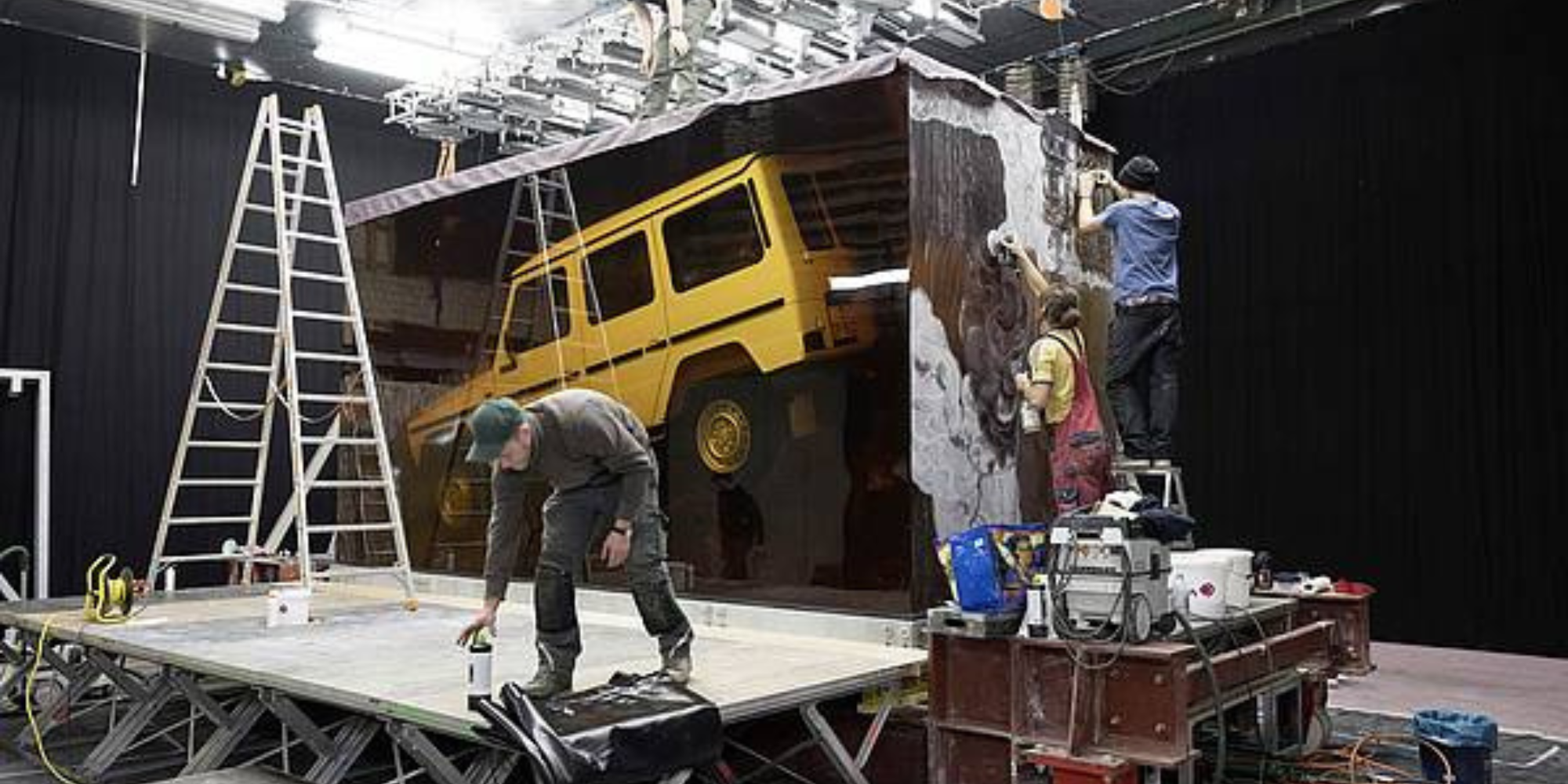A Symbol in Resin – The Mercedes G-Class as a Statement
In the freezing cold of Detroit during the NAIAS auto show in February 2018, even time itself seemed to have frozen: A 1979 Mercedes G-Class, encased in a gigantic block of synthetic resin, stood in front of the exhibition hall and welcomed visitors. It appeared as if the G-Class had been preserved mid-descent on rugged terrain – like an insect trapped in amber. But instead of a drop of fossilized tree resin, more than 40,000 liters of liquid epoxy were required to preserve the vehicle for eternity. The result – the world’s largest block cast in resin – captivated the audience.
It wasn’t the first time the G-Class drew attention. During test drives in the Tunisian desert in 1978, locals curiously observed the unfamiliar off-road vehicle. Over the course of nine weeks, Mercedes engineers pushed the G-Class to its limits – across blazing heat, sand dunes, rocky landscapes, and water. It passed its endurance test and entered the German market the following year. Off-road enthusiasts embraced it quickly, and even a military version followed. In 1980, it was converted into a Popemobile for Pope John Paul II’s visit to Germany – and immediately made headlines after receiving a traffic ticket when the driver took an unauthorized shortcut through a pedestrian zone.
An idea becomes a symbol
Though it has undergone various technical upgrades over the decades, the G-Class has remained true to its core strengths – including its timeless design. For the launch of the new generation, Mercedes wanted to express this unchanging DNA. “The G-Class is something special and very close to our hearts,” said Ian James, Head of Marketing for the G-Class at Mercedes-Benz. “After 39 years, we wanted to make sure we launched the new model with something meaningful.” From this conviction, Berlin-based agency antoni developed the campaign idea: Stronger than time. Its highlight: a first-generation G-Class, preserved for eternity.
But how do you preserve a car? The German Association for Materials Research and Testing had the answer: a two-component epoxy resin with low shrinkage was needed to completely encapsulate the car without deformation. To fully enclose the 4.8-meter-long, 1.9-meter-wide, and 1.9-meter-high G-Class, an enormous quantity of resin was required. More than 52 industrial containers of Electro Resin EP were delivered for the task – the largest volume ever ordered for a single project.
“We have to do this,” was Andreas Kleinmann’s first thought. He’s with Hamburg-based film production company Markenfilm. Enthusiasm for this once-in-a-lifetime project outweighed any doubt about how it could actually be done. Kleinmann and his team accepted the challenge. Under his coordination, the resin cube took shape in a lab near Hamburg.
First, the team conducted a series of tests with the resin to study its behavior. The two components react with one another during mixing and generate heat. “Every pour was like a thriller,” Kleinmann recalls. “The bigger the test pieces got – embedded seats, dashboards, vehicle doors – the harder it became to control the exothermic reaction.” The team used the test results to determine the casting speed and the optimal thickness of each layer – around 3 centimeters.
Layer by layer to eternity
Creating a controlled workspace was essential. “In the end, we had a cleanroom environment that was completely isolated from the outside world,” says Kleinmann. Dehumidifiers, air conditioning, air circulation, and constant temperature monitoring across the entire resin mass and every part of the vehicle were required. A team of 39 workers entered the workspace only in protective suits and masks – to avoid contamination and exposure to resin vapors.
The G-Class itself also had to be free of any contaminants. It was almost completely disassembled and thoroughly cleaned to prevent chemical reactions with the resin. The engine was ice-blasted before the vehicle was reassembled and positioned sideways for embedding. The resin cube was built up over 90 layers, each added every 24 hours and measuring just over 30 millimeters thick. Each of these 550-kilogram layers had to be poured in under 15 minutes – bubble-free. Removing air pockets around upholstery, underbody, carpet or inside the doors was one of the main tasks. Simultaneously, the team had to ensure constant climate conditions. “After each pour, the block had to be returned to its optimal temperature for the next layer,” Kleinmann explains. As the resin cube grew, so did the formwork – board by board. After demolding, the oversized cube was cut to its final dimensions with a diamond wire saw and polished.
After 8,892 working hours, it was complete: The G-Class was embedded in a resin block measuring 5.5 × 3.1 × 2.55 meters. The next step was to transport it out of the lab and send it on a world tour. From Hamburg, the 52-ton ‘Amber Cube’ was shipped via Southampton to Baltimore and from there to Detroit. But Detroit wasn’t its final stop – the cube is expected to continue its journey around the world before eventually finding a permanent home. Where exactly? That remains a secret.




